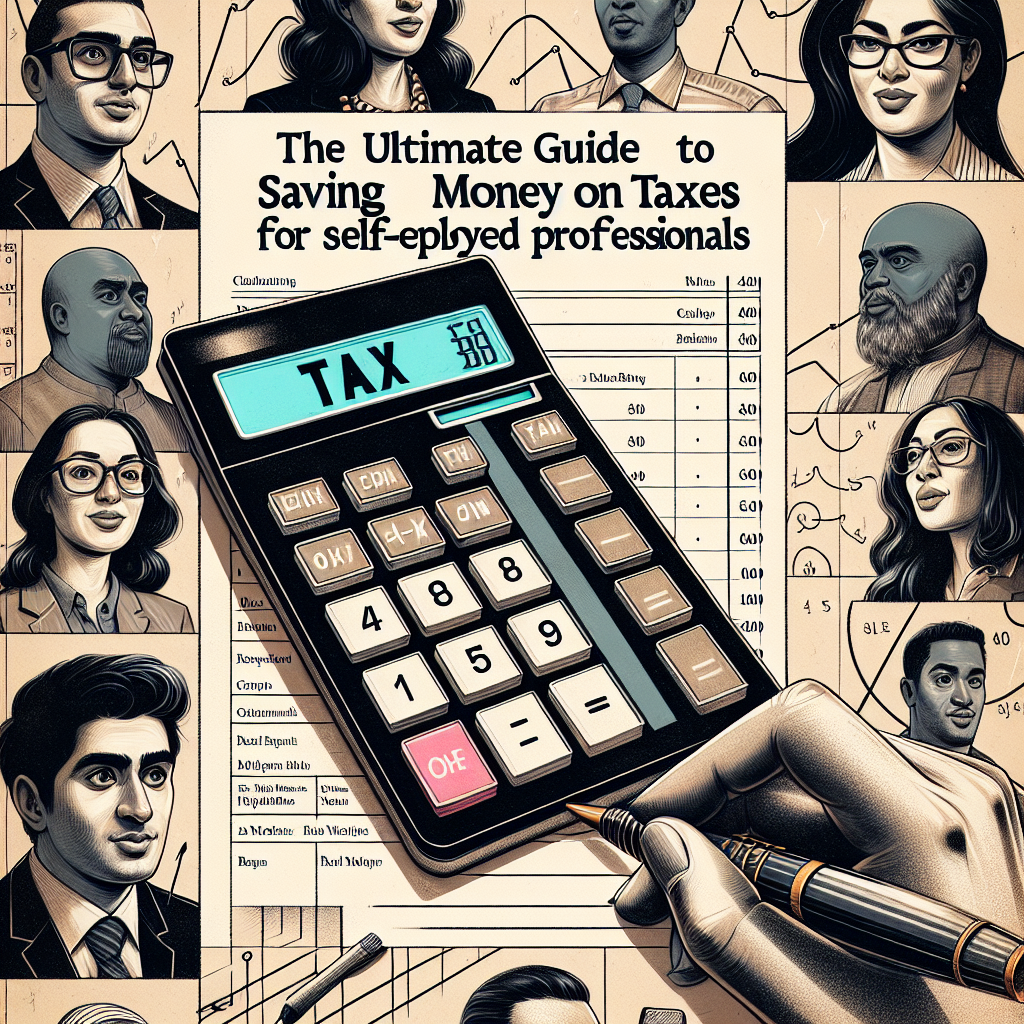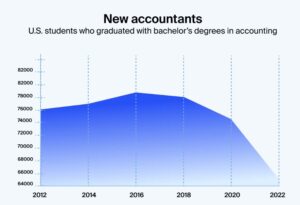The Ultimate Guide to Saving Money on Taxes for Self-Employed Professionals
As a self-employed professional, navigating the complexities of the tax system can be daunting. Yet, understanding the intricacies and strategies available to you can significantly reduce your tax liability and save you money. In this comprehensive guide, we’ll walk you through tax-saving tips, tax planning strategies, and various deductions and credits that can help you keep of your hard-earned money.
Understand Your Tax Obligations
Before diving into specific strategies, understanding your tax obligations as a self-employed individual is crucial. When you’re your own boss, you’re responsible for wearing many hats — and unfortunately, one of them is the “tax collector” cap. Let’s get the basics covered to make sure you’re set up for success.
First and foremost, self-employment tax is a biggie. This tax covers Social Security and Medicare and currently stands at a hefty 15.3%. Let’s break it down:
- Social Security – 12.4%
- Medicare – 2.9%
Yes, it stings a bit more than the average payroll employee’s contribution, but hey, with great power (over your schedule) comes great responsibility (to Uncle Sam).
“You can’t escape the responsibility of tomorrow by evading it today.” — Abraham Lincoln
Knowing your tax brackets can help plan your tax commitments effectively. For 2023, the tax brackets for single filers are:
- 10% on income up to $11,000
- 12% on income over $11,000
- 22% on income over $44,725
- 24% on income over $95,375
- 32% on income over $182,100
- 35% on income over $231,250
- 37% on income over $578,125
Each of these brackets is like rungs on a ladder — the higher your income, the more tax you’re going to pay for every additional dollar. Sounds straightforward, right? But here’s where it gets interesting (and a bit complex): tax deductions and credits can significantly reduce your taxable income and reduce your overall tax liability. It’s like finding a secret trapdoor on each rung of that tax ladder!
For instance, did you know that an estimated 20% of self-employed professionals missed out on valuable deductions like home office expenses and health insurance premiums in 2022? That’s free money left on the table! Make sure you jot down every possible deduction or use tools that aggregate this information for you.
You don’t need a PhD in accounting to navigate your tax obligations, but understanding the basics can make a huge difference in how much you save money on taxes. And as Benjamin Franklin wisely put it, “In this world, nothing can be said to be certain, except death and taxes.” But with the right knowledge, maybe we can make the latter a tad less painful.
Keep Meticulous Records
Accurate and detailed record-keeping is like flossing: you know you should be doing it, but it’s easy to let it slide. However, neglecting this crucial task can cost you big when tax season rolls around. For self professionals, maintaining meticulous records of all business expenses, income, and financial transactions is not just important—it’s essential. According to the IRS, keeping detailed records can help you to substantiate your income and deductions, which could mean the difference between a lower tax bill and a pricey audit.
Utilizing tools like StatementCloud to automatically sync your monthly statements to cloud storage can save you countless hours of searching through disorganized paperwork. Imagine the joy of a streamlined process where every receipt, invoice, and financial document is just a click away. With digital solutions, your financial records are not only more secure but also easily accessible.
“The hardest thing in the world to understand is the income tax.” – Albert Einstein
Here are a few tips to help you keep those records in check:
- Automate Expense Tracking: Use financial apps that can connect to your bank account and credit cards, hence automating expense categorization and tracking. This reduces human error and saves a considerable amount of time.
- Separate Business and Personal Finances: Have a dedicated bank account and credit card for your business. This segregation makes it simpler to trace transactions, ensuring no mix-ups when claiming deductions.
- Save Receipts Digitally: Snap a picture of each receipt using your smartphone and store it in your cloud storage. IRS accepts digital copies as valid proof.
- Make Use of Software: Accounting software like QuickBooks or Xero can sync with your bank accounts to automatically pull in transactions, making reconciliations much easier. Some even allow integration with cloud storage solutions for added convenience.
- Regularly Review Financial Statements: Take a few minutes every week to review your income and expenses. Not only will this help you stay on top of your cash flow, but it also makes it easier to spot any discrepancies before they become large issues.
By maintaining thorough records, you place yourself in a stronger position to save money on taxes through various deductions and credits available to self-employed professionals. Benjamin Franklin once said, “An investment in knowledge pays the best interest,” and in the world of taxes, being knowledgeable about your financial situation can indeed yield substantial returns.
Take Advantage of Tax Deductions
Maximizing your tax refunds can feel like finding hidden treasure. The first step? Leveraging common deductions available for self-employed professionals. Think of it as revisiting your expenses with a detective’s eye — only this becomes more like Sherlock Holmes meets the IRS. Here’s a closer look at the tax deduction gems that can significantly lower your tax bill:
>Home Office Expenses: If you’re running your business from home, deducting home office expenses can make a big difference. This includes a portion of your mortgage or rent, utilities, and even internet costs. The IRS generally allows a simplified option of $5 per square foot, capped at 300 square feet, but depending on your situation, a more detailed calculation might yield a better deduction.
Travel Costs: Those miles you rack up visiting clients or attending conferences? Deductible! For 2023, the standard mileage rate is 65.5 cents per mile, up from 58.5 cents per mile in 2022 (IRS Info). Keep a log — it’s worth the little extra effort.
Office Supplies: Pens, papers, printer ink, oh my! Any items you purchase to keep your business running smoothly can be written off. This also includes big-ticket items like computers and office furniture. Remember to save receipts, and give your accountant a reason to smile.
Health Insurance Premiums: If you’re self-employed and paying for your own health insurance, those premiums could be deductible. This deduction can be a lifeline, as healthcare costs have been steadily climbing. The Health System Tracker notes that the average premium for a single employee in 2020 was $7,470 annually — no small potatoes.
The margin between feeling financially savvy and feeling like you’re throwing money into a black hole can often come down to understanding what qualifies as a deductible expense. As Albert Einstein aptly quipped:
“The hardest thing in the world to understand is the income tax.”
Albert might have had a point. But a bit of knowledge and some strategic expense tracking can lead to significant savings. Don’t leave money on the table — make sure every eligible expense is working to reduce your tax liability. After all, it’s not just about minimizing taxes; it’s about optimizing them.
Utilize Tax Credits
Let’s dive into the magical world of tax credits, shall we? If tax deductions are like getting a discount on your taxable income, tax credits are the ultimate golden tickets—they reduce your tax liability dollar-for-dollar. Straight the point, right? Imagine your tax bill is like a pie, and tax credits are those little erasers you use to wipe off every slice you don’t want to eat. Yum, fewer taxes! 🍰
Now, let’s explore some tasty tax credit options that you can feast on:
- Healthcare Credits: You might qualify for the Premium Tax Credit if you purchased a health plan through the Health Insurance Marketplace. It’s designed to make health insurance more affordable by lowering your monthly insurance premiums. According to the IRS, the Premium Tax Credit has helped millions reduce their hefty healthcare costs. 🌡️
- Education Credits: If you’re back in school to upskill or find yourself paying tuition fees, the American Opportunity Tax Credit (AOTC) and Lifetime Learning Credit (LLC) can be your best pals. The AOTC offers up to $2,500 per eligible student, while the LLC offers up to $2,000 per tax return. You could essentially get an education at a bargain! 🎓
- Energy-Efficient Home Improvements: Introducing the Internal Revenue Code’s Section 25D—also known as the Residential Energy Efficient Property Credit. Yes, it’s a mouthful, but it essentially rewards you for going green. Invest in solar panels, wind turbines, or geothermal heat pumps, and you could claim a tax credit for up to 26% of the installation costs. Who knew saving the planet could also save you money? 🌍
In simpler terms, while a tax deduction might save you a few bucks here and there, tax credits take a direct bite out of your tax bill. As Uncle Sam pats you on the back for making energy-efficient improvements or furthering your education, you can smile knowing the IRS has got your back. As the famous tax guru, Tony Robbins once said:
“It’s not what you earn, it’s what you keep. Cut your taxes, increase your wealth, and live a financially free life.”
So, next time you’re planning for tax season, don’t overlook these juicy tax credits. They might be the game-changer you need to truly save money on taxes.
Invest in Tax-Advantaged Accounts
When it comes to saving money on taxes, investing in tax-advantaged accounts is akin to discovering a hidden treasure chest guarded by a friendly dragon that doubles as your financial advisor. Trust us, your future self will thank you for finding this gem. Not only do these accounts help you stash away funds for retirement, but they also come with dazzling tax benefits.
For self-employed pros, there are a few standout options:
- SEP IRAs: These Simplified Employee Pension plans are a dream for small business owners. You can contribute up to 25% of your net earnings from self-employment, capped at a generous $61,000 for 2022. Did someone say, “massive tax deduction”? Yup, and it also grows tax-deferred!
- SIMPLE IRAs: Short for Savings Incentive Match Plan for Employees, but don’t let the name intimidate you. This plan is straightforward and lets you contribute up to $14,000 for 2022, with an additional $3,000 catch-up contribution if you’re over 50. Best of all, contributions reduce your taxable income.
- Solo 401(k)s: Perfect for the freelancer in you, this plan lets you play both employer and employee roles. You can contribute as an employee up to $20,500 ($27,000 if you’re over 50) and an additional 25% of your business earnings as the employer. Potentially, you could stash away up to $61,000 annually – talk about tax-deferred growth on steroids!
Imagine if Albert Einstein had dipped his toes into the world of tax-advantaged accounts. He famously said, “
Compound interest is the eighth wonder of the world. He who understands it, earns it…he who doesn’t…pays it.”
Think of tax-deferred growth like compound interest on steroids! It’s all about making your money work smarter, not harder.
A solid strategy with tax-advantaged accounts isn’t just about cutting your current tax bill; it’s about paving the way to a tax-savvy retirement. According to the IRS, the tax benefits from these accounts can often reduce your taxable income significantly, which means a fatter wallet today and a comfy retirement nest egg tomorrow.
So, self-employed superheroes, consider setting up those tax-advantaged accounts. Your future self will clink their glass – filled with something fancy, no doubt – to your wise decisions. Welcome to tax-efficient retirement planning at its finest!
Implement Smart Tax Strategies
Smart tax strategies are akin to finding hidden treasure—when you unearth them, your financial future gleams a little brighter. Let’s dive into some of the most effective ways for self-employed professionals to save money on taxes, starting with income splitting. Imagine you’re a successful freelance graphic designer earning a robust income. If your spouse or a family member is in a lower tax bracket, you can allocate of your income to them. This strategy, known as income splitting, can significantly reduce your overall tax liability.
Moreover, timing is everything—especially when deferring income. By pushing your income into the next tax year, you can sometimes stay in a lower tax bracket, enjoying the sweet relief of reduced taxes. For instance, if you’re on the cusp of a higher bracket, defer bonuses or year-end payments to January and keep your current year’s tax burden light.
But why stop at income when you can make your investments work for you in a tax-efficient manner? Making tax-savvy investments is crucial for maximizing returns. Investigating tax-efficient portfolios and tax-advantaged accounts like IRAs and 401(k)s can be game changers. For example, the gains in these accounts grow tax-deferred, meaning you don’t pay taxes until you withdraw the money, typically in retirement.
For those who receive passive income from investments, real estate, or other ventures, understanding capital gains tax strategies is essential. Capital gains—the profit from selling an asset—are taxed differently from regular income. Holding an asset for over a year qualifies it for long-term capital gains tax rates, which are generally lower than short-term rates. As Warren Buffett once said:
“The best holding period for an investment is forever.”
Here are some actionable bullet points to keep your tax game sharp:
- Consult with a tax advisor to maximize family income splitting opportunities.
- Defer income wisely by arranging to receive payment in the following tax year when possible.
- Invest in tax-deferred or tax-advantaged accounts to grow your wealth without immediate tax implications.
- Hold onto investments for over a year to benefit from lower long-term capital gains tax rates.
These strategies are not just smart; they’re essential tools for tax-efficient financial planning. So, why not give them a try and watch your tax bill shrink while your savings grow?
Plan for Quarterly Estimated Taxes
As a self-employed professional, paying estimated taxes quarterly might feel like wrestling an octopus: there are many arms to manage. But here’s a silver lining for you – planning ahead can make this beast a lot tamer, and save you from those pesky underpayment penalties and interest that the IRS loves to throw around. Essentially, Uncle Sam doesn’t wait till April to get his share; he wants it in manageable bites throughout the year. So, how do we tackle this?
First, get a handle on your income. Yes, income levels can fluctuate wildly when you’re self-employed, but having a realistic estimate is your starting point. Use last year’s figures as a basic guide if your business structure hasn’t changed drastically.
You can calculate your quarterly estimated tax payments using IRS Form 1040-ES. Not exactly light reading, but it’s your ticket to avoiding an April panic attack. IRS also has an online payment agreement application for those who prefer doing calculations online.
Secondly, budgeting for these payments is crucial. You wouldn’t bake a cake without measuring the ingredients, right? In the same way, setting aside money throughout the year for these taxes can help you avoid a financial disaster. Think of it as a “tax savings” jar that you keep filling up.
“By failing to prepare, you are preparing to fail.” – Benjamin Franklin
To help plan effectively, consider creating a separate bank account just for tax savings. Aim to transfer a portion of your income into this account each month. If filling up that account feels like pulling teeth, set up an automatic transfer. Remember, automation can be your best ally here.
Regarding penalties, here’s a nugget of wisdom: according to the IRS, the penalty for underpayment is generally calculated as the difference between the amount you should have paid and the amount you did pay, multiplied by the annual interest rate for the federal short-term rate plus 3%. Ouch!
Don’t forget, employing the savvy tax-saving strategies can further trim down your estimated tax payments. For instance:
- Home office deduction: If you work from home, a portion of your home expenses can be deducted.
- Health insurance premiums: Payments for health insurance can be deducted if your business is your primary source of income.
- Retirement contributions: Contributions to self-employed retirement plans like SEP IRAs can lower your taxable income.
Planning your quarterly estimated taxes may not be the most glamorous part of being self-employed, but it’s an essential step in effective tax management. And remember, the goal is to stay on top of your taxes—not the other way around. You got this!
Understand Tax Incentives and Relief Programs
When it comes to saving money on taxes, understanding tax incentives and relief programs can be a game-changer. Imagine unlocking hidden treasures within the tax code! These opportunities can range from credits for hiring certain employees to niche programs available during economic downturns. Let’s dive in, shall we?
Firstly, did you know that the Work Opportunity Tax Credit (WOTC) offer you significant savings for hiring individuals from specific groups who face challenges finding employment? That means hiring a veteran or someone who’s been unemployed for a long time not only helps you gain valuable team members but also slashes your tax bill. Win-win!
But wait, there’s more! Economic hardships, such as the one caused by the COVID-19 pandemic, often lead to the introduction of various tax relief programs. For instance, the Employee Retention Credit (ERC) was introduced to encourage businesses to keep employees on payroll during tough times. It’s like the government saying, “Hey, hang in there; we’ve got your back!”
Keeping abreast of such information is crucial. According to a 2021 survey by the National Federation of Independent Business, a third of small businesses took advantage of some form of tax incentive during the pandemic. That’s pretty significant when you imagine the potential savings!
Here are a few more tax-saving opportunities you should definitely keep an eye on:
- Research and Development Tax Credit (R&D Credit): If your business engages in activities that improve products or processes, you might qualify for this juicy tax credit.
- Energy Efficiency Incentives: Installing solar panels or energy-efficient equipment can lead to substantial tax credits.
- State-Specific Incentives: Some states offer unique tax breaks for activities like recycling or creating green jobs.
Let’s be real; your tax liability can sometimes feel like a black hole sucking up your hard-earned money. But remember, as Benjamin Franklin famously said,
“In this world, nothing can be said to be certain, except death and taxes.”
Even though taxes are inevitable, there’s no reason to overpay. By staying informed about tax incentives and relief programs, you can transform your tax season from a source of dread to a savvy opportunity for savings. Now that’s smart tax planning!
Seek Professional Advice
Sometimes the best tax-saving tips come from consulting with a tax professional. Now, I know what you’re thinking—”paying advice to save money?” But here’s the thing: a well tax advisor can pay for themselves several times over by helping capitalize on tax-saving opportunities you might not even know existed.
For example, did you know that hiring a family member can provide both income tax reduction and a raft of other benefits? According to the IRS, if you employ a spouse, the wages you pay can qualify as a business expense, effectively reducing your taxable income (source). But how will you know if it’s right for you without personalized advice?
Using professional advice not only helps you optimize your taxes but also ensures compliance with ever-changing tax laws. A SmallBizTrends survey found that 82% of small business owners who consulted tax advisors saw a significant reduction in their tax liability.
“The hardest thing in the world to understand is the income tax.” — Albert Einstein
If Einstein struggled, it’s safe to say that taxation complexities are beyond most of us mere mortals! A tax professional can help tailor strategies to your specific financial landscape, whether it’s maximizing tax refunds, minimizing taxes through tax-efficient investments, or optimizing tax-advantaged accounts. They can also offer:
- Tax-deferral strategies: Leveraging retirement accounts to defer taxes until retirement when your tax rate may be lower.
- Tax-efficient budgeting: Structuring your finances to take advantage of various deductions and credits throughout the year.
- Capital gains tax strategies: Timing the sale of investments to minimize capital gains taxes.
- Charitable tax deductions: Planning donations to maximize tax benefits while supporting causes you care about.
Don’t think of it as an expense; think of it as an investment in your financial health. With the right advice, you can navigate the tax season with confidence and maybe even a bit of extra cash in your pocket.
By understanding your tax obligations and leveraging available tax-saving strategies, you can significantly reduce your tax liability and maximize savings. Use the tips and strategies outlined in this guide to optimize your approach to taxes as a self-employed professional, keeping more money in your pocket and less in Uncle Sam’s.







